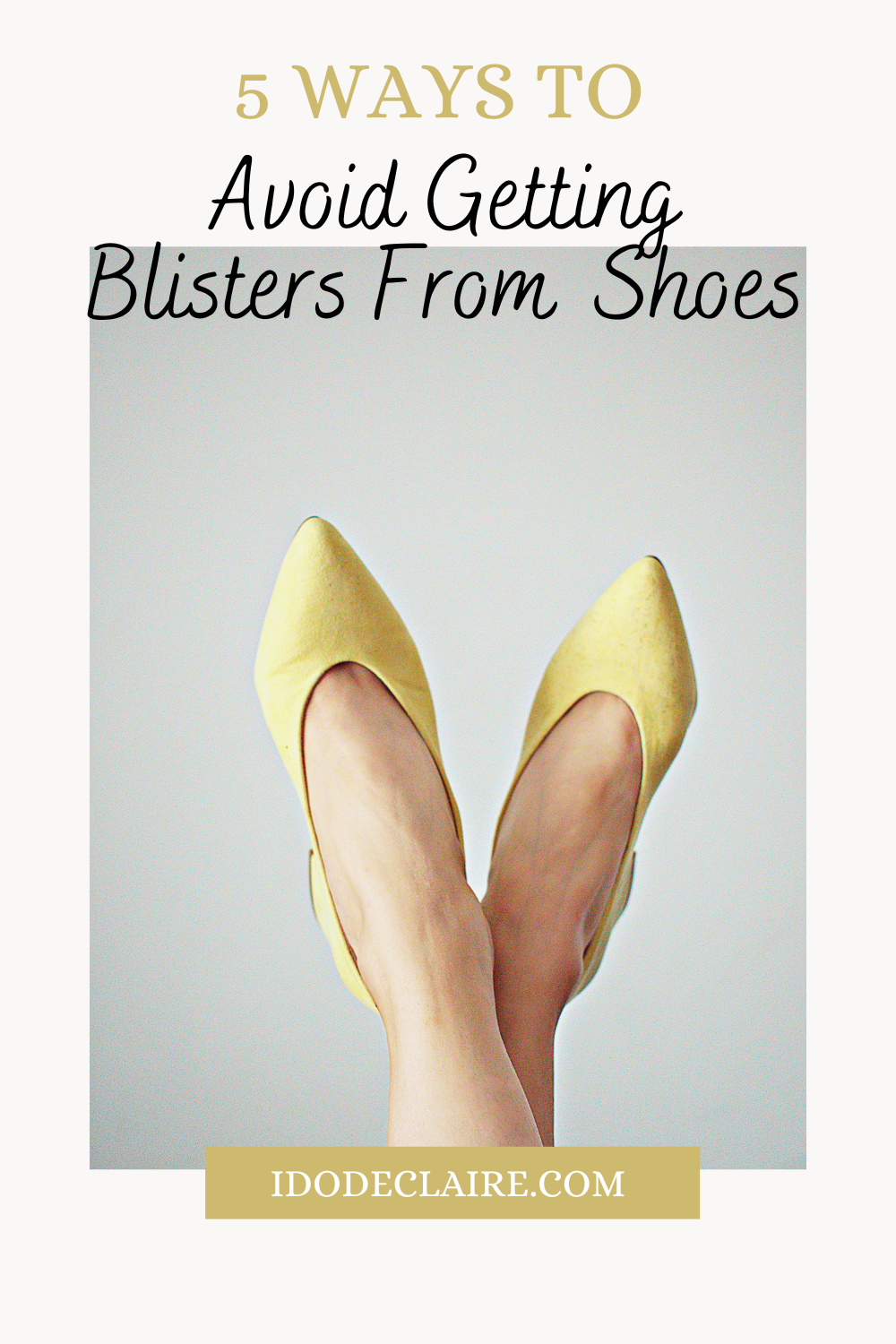Apart from design or aesthetic appeal, people who are shopping for shoes usually check for quality and comfort. That’s why they make it a point to try out the footwear before they purchase them. But even after careful examination and spending a few minutes trying them on, a pair of new shoes can cause blisters on your feet.
More often than not, these painful sores are caused by your feet rubbing against the too-stiff material of your new shoes. One of the easiest ways to avoid having your foot rubbed is to have shoes that are made to fit your foot exactly, like those from The Good Feet Store. Typical shoes are designed and made to fit standard shapes – but people don’t have a standard foot width, length, or even toes all the ‘right’ length. Standard shoes squeeze your foot into their shape rather than fit to the shape of your foot, which is what causes blisters.
Nothing should stop you from wearing your brand-new shoes, no matter where they are from. From how to protect your feet to ensuring that your new shoes are right for you, here are five ways to avoid getting blisters.
Wear The Right Hosiery
One of the easiest ways to avoid getting blisters is to wear the right hosiery. Adding a soft layer of fabric around your feet protects them from friction. But don’t just put on the first pair of socks you come across. You also need to carefully choose your hosiery and wear the right ones for the type of shoes and activities you’ll be engaging in. If you’re doing sports, for example, it’s best to wear moisture-wicking socks as they help keep your feet dry.
While soft socks will feel comfortable and help you avoid getting blisters, they’re not appropriate for some types of footwear. For instance, wearing sports socks with your heels or ballet flats will cause your shoes to feel too tight on your feet. This type of combination would also be inappropriate in a professional setting. Instead, put on a pair of tights to keep your look polished and to avoid adding bulk to your footwear. When you shop tights, opt for pairs that have thicker fabrics on the heels and toes to protect these blister-prone areas.
Photo by Karolina Grabowska: https://www.pexels.com/photo/close-up-of-woman-feet-4963838/
Moisturize Your Feet
Another effective way to ensure your feet don’t get blisters is to keep them smooth and hydrated. Blisters are a result of your feet rubbing against the insides of your shoes. However, if you regularly apply moisturizer to your feet, these cosmetics act as a sort of lubricant. The friction between your feet and shoes is lessened, so you are also less likely to get blisters. Foot lotion and petroleum jelly are both affordable options, and they’ll keep your feet soft as well.
Keep Feet Dry
Another reason you get blisters on your feet is that they’re wet with perspiration. Sweat can clog pores in the feet and lead to the development of blisters. Wearing moisture-wicking socks will help your feet stay dry, and you can also use products you may already have in your home. For example, sprinkling plain cornstarch in your socks and shoes allows for the moisture to be absorbed by the powder. You can also use baby powder and talcum powder. These common household items are very effective in keeping feet dry, and they prevent bad foot odors from developing as well.
On the other hand, an unconventional way to reduce blisters is to apply antiperspirant to your feet. These products are specifically formulated to prevent sweating, and some brands offer spray-ons that can be used on the feet. Applying antiperspirant before you put your socks and shoes on can help your feet stay both sweat-free and blister-free.
Photo by cottonbro: https://www.pexels.com/photo/woman-in-white-shirt-and-black-denim-jeans-sitting-on-beige-car-seat-6110079/
Protect Problem Spots
Aside from your heels and toes, you may notice some other spots on your feet becoming red after wearing your new shoes. These are referred to as hot spots, and they experience pressure and friction from the contact they make with shoes. If pressure isn’t relieved, the hot spot will most likely become a blister.
Protect the problem spots and avoid getting blisters by covering them with gel bandages, sports tape, or special patches. You can also place a specially-made blister bandage on the area that gets the most friction. These bandages protect your skin from further rubbing by acting as a second layer of skin. Some even provide cushioning to give relief to already-irritated problem spots. Blister pads are perfect for all-day wear and won’t slide off.

Photo by Tara Winstead: https://www.pexels.com/photo/brown-band-aids-on-blue-surface-7722833/
Break In Your New Shoes
While protecting your feet from blistering is good, it’s best to also address the cause: the stiff shoe material that hasn’t yet conformed to the shape of your feet. Breaking your shoes in involves stretching out the shoe material so it wraps around your feet more comfortably. However, it’s important to do this properly so your shoes don’t get damaged in the process, so stick to the methods mentioned below:
-
Use Chunky Socks
A common and effective way to stretch your new shoes and keep your feet blister-free is to wear the shoes with thick socks, while you’re at home. Put on the chunkiest socks you have and walk around the house in your new shoes. The bulky socks will cause the shoe material to slowly stretch out, thus making it more comfortable to wear. If you don’t have a thick pair of socks, you can wear multiple pairs over each other until you’ve achieved the desired bulk.
Photo by cottonbro: https://www.pexels.com/photo/wood-fashion-man-people-6594253/
-
Apply Heat to Leather Shoes
You can also speed up the stretching of your new shoes by applying some heat to them. The heat causes the material to soften a bit, thus making the shoe feel more comfortable to wear. But take note that this trick works best for an all-leather pair and that heat can damage shoes made of synthetic materials. So make sure that the shoe material doesn’t include any synthetic components that might melt in the process.
While wearing chunky socks with your new shoes, aim a warm hair dryer over a particularly tight or uncomfortable spot in your shoe for about 20 to 30 seconds. Make sure the hair dryer is far away so that you don’t burn your feet. While the shoes are still hot and flexible, take a quick walk in them to loosen the material. You can repeat this process a few times if your shoes need to stretch a bit more, but make sure that they still feel snug enough for you to wear without the thick socks.
-
Place The New Pair inside the Freezer
For shoes that aren’t made from leather, you can stretch the material by exposing them to cold temperatures. Begin by filling two plastic, freezer-friendly bags with water and placing them inside your new shoes’ toe areas. Then, put the shoes in the freezer overnight. The water will freeze, and the resulting ice will expand the shoes to stretch out the toes.
It can be pretty disappointing when you find painful blisters on your feet after wearing your brand-new shoes. Thankfully, you don’t have to stop using the pair or simply bear the pain. Follow the helpful tips mentioned above so you can avoid getting blisters from your new footwear.






